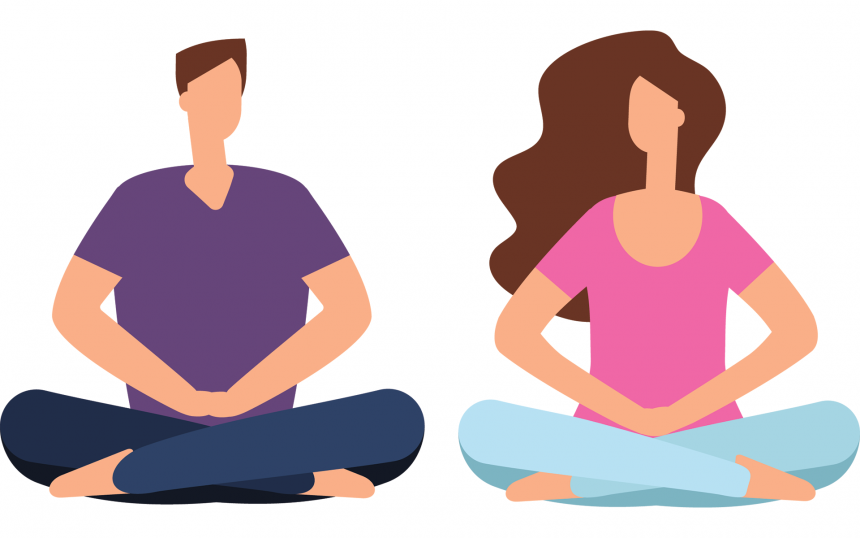Meditation is very important for your mind and body. Researchers at Harvard Medical School discovered that, in long-term practitioners of relaxation methods such as yoga and meditation, far more ”disease-fighting genes” were active, compared to those who practiced no form of relaxation.” Moreover, Turns out it can even help serious sleep problems, stress less, Beat Anxiety, Relax and Lead a Successful Life. It’s not easy to do meditation but there are some tips to help you to become an expert. But first let’s talk about the advantages of meditation first. I will mention some advantage here:
Sleep Better: More Shut-Eye at Night Means Brighter Days: More Shut-Eye at Night Means Brighter Days: Sleep isn’t just relaxation for eight hours a day—it’s essential to our cognitive functioning. Meditation gives you all sorts of benefits, like enhanced REM sleep and increased levels of melatonin. Turns out it can even help serious sleep problems. Researchers conducted a study. to see if mindfulness meditation would benefit those struggling with chronic insomnia. After eight weeks, those in the meditation training had less total wake time during the night, were more relaxed before going to bed, and reduced the severity of their sleep problems. Plus, in a follow up study six months later, the insomnia sufferers had maintained a better quality of sleep.
Stress Less: Make Room for More Happiness : It’s a little-known secret that Wall Street execs, famous artists, and Silicon Valley whiz kids are some of the biggest advocates of meditation as a way to manage stress. A 2005 study at Harvard Medical School found that meditation increases the thickness of your prefrontal cortex, the area of your brain associated with attention and self-awareness. Furthermore, we now know it even reduces employee stress and burnout. A study on teachers at a school for children with severe behavioral problems who were treated to a Transcendental Meditation program had less stress, less depression, and overall lower burnout than other teachers.
Beat Anxiety: Send Worries Packing: Focusing on all the terrible things that might happen to us—but often don’t!—takes us away from the present, and causes our bodies a lot of stress. Dr. Elizabeth Hoge, a psychiatrist and assistant professor of psychiatry at Harvard Medical School, found that meditation could even help those with generalized anxiety disorder, a condition marked by hard-to-control worries, poor sleep, and irritability.
Relax: Don’t Let the Little Things Get You Down: Relaxing your body and mind with meditation helps you to stay centered when you inevitably encounter those everyday stressors—rush hour traffic, anyone? Investigators from the Benson-Henry Institute at Massachusetts General Hospital found that practicing meditation causes what is called the “relaxation response,” the opposite of the “fight-or-flight” response—what happens to our bodies when we get stressed. Their studies showed that the relaxation response alleviates anxiety and also has positive effects on heart rate, blood pressure, and brain activity.
Tip to do meditation
1. Start early. Try to meditate first thing in the morning. That way you can be sure that it actually gets done and not bumped off the to-do list as the day gets more hectic. Plus, morning meditation can be a nice way to start the day — you’re refreshed, awake, and on track for a mindful day.
2. Same time, same place. If you can’t meditate in the morning, try to make a commitment to meditating at the same time and in the same place every day. Making your practice a regular part of your normal daily routine is key to developing a lasting habit.
3. Get creative about location. Yes, it’s recommended that your regular meditation practice happens in the same place every day for consistency. But sometimes that simply isn’t possible. The great thing about meditation is that it can be practiced anywhere — at home, at work, in a park, even walking in a busy airport. It doesn’t matter where it happens, as long as you can find stillness and not be disturbed.
4. Don’t sit cross-legged (if you don’t think it’s comfortable). Forget the stereotypical images of people sitting cross-legged to meditate; for most people, that position can be uncomfortable — and distracting. What’s most important is to find the meditation position that’s most comfortable for you (and if that just so happens to be sitting cross-legged, then of course that’s perfectly fine).
5. Find the best position for you. There are four meditation positions that we find work most optimally. You don’t need to force yourself to sit up too straight. If you’re too upright, your mind will be too uptight. The ideal meditating position for most people is somewhere in between: sitting in a chair or on a sofa or couch, arms and legs uncrossed, feet flat on the floor, a cushion or rolled up towel underneath the backside, so that the back is naturally upright.
 Login as
Login as




































;>/img/banner/partner $url=>$index; .png)